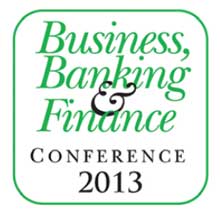 |
 |
 |
|
February 2013 |
Derivatives are financial instruments which derive their value from an uderlying asset or a financial instrument. The underlying assets and/or financial instruments could be stocks, bonds, currency, commodities, indices and even weather. Simply demonstrated, let us imagine a firm having a receivable denominated in foreign currency. It is due in 30 days. The firm clearly has a foreign exchange exposure because between now and then, the foreign currency might depreciate, causing a conversion loss to the firm. It would be good if there was some way through which the firm could lock in today’s foreign exchange rate for future conversion. A currency future or a currency forward is one way to do that. The firm can agree to sell the foreign currency after 30 days at today’s rate to another counterparty. Needless to say that the counterparty would be in an opposite situation and therefore motivated to take the other side of the transaction. This way, it can eliminate its FOREX exposure. The underlying asset in this case is the foreign currency and the forward/fuures contract is a derivative instrument based on that. Also, this is a hedging transaction because the incoming FOREX position was offset by an equivalent outgoing FOREX position. As another demonstration, firms can use options contracts to hedge their exposure. An options contract is a right to buy or sell an underlying asset/instrument at a predetermined price (exercise price) within or at the end of a predefined period. The right to buy is the “call option” and the right to sell is the “put option.” These rights can be purchased for a price called the option premium which is small relative to the size of the contract. One good thing about an options contract is that it can be excercised only if it is beneficial to do so. For our firm which has the FOREX exposure, it can hedge its position by purchasing a put option on the foreign currency. If the foreign currency appreciates, it can let the option expire and sell the foreign currency in the open market. If the foreign currency depreciates, it could exercise the option to sell at the exercise price. This way, an options contract could protect the firm from FOREX exposure without having to sacrifice the upside of exchange rate volatility. Take this a little forward, do away with the much decorated financial jargon, and things begin to look like glorified gambling. For example, in a weather derivative, people can play with the posssibility of, say, rain versus sunshine. The actual outcome (rain or sunshine) will determine the direction of money being exchanged. In this world of automation, a piece of software is all you need to conduct a financial transaction. This implies that derivatives can be traded continuously, almost till the day they mature. The problem, however, is that the actual delivery of goods rarely takes place, with transactions getting squared off through offsetting positions. On the day of settlement therefore, only money changes hands.
On the other hand, we have structured finance as a mechanism for risk management, where the focus is on creating high quality (low risk) securities from a comparatively riskier portfolio. For instance, we could accumulate promises of payments from a pool of borrowers (like mortgage borrowers), compile and convert them into various tranches (a french word for slice). Some of these tranches can be “senior” to others depending on factors like prepayment and default risks. The senior ones will have first right to get money in case of default by borrowers. Thus they get high ratings (instruments with the highest safety) from credit rating agencies. They are then sold in the market as ready-to-buy-instruments, sometimes even retail instruments for the general public. I can get a little smart in that if I have taken a mortgage loan, I can, at the same time, also buy a security from the pool to which my own mortgage loan was also a contributor. But if the portfolio is bad (for example, a portfolio of subprime loans), it remains bad. And when it goes bust, all tranches face the tragedy, including my own. The irony is that such financial products, which were meant to reallocate risk, themsleves increase it by transferring it to the weakest link in the chain. Instead of “risk management” then, what we see is “risk magnification.” A more worrying aspect of this financial (re)engineering is that it can also lead to uncontrolled volatility and rise in prices, which is in no way linked to the value that a product brings to the economy. This is at crossroads with the first lesson of finance and economics that price is the total value of a product or service in the economy. What we tend to forget in the humdrum, however, is that like any other human invention, derivatives can be be misused. Derivatives, just like nuclear energy, can either be a boon or otherwise, depending on how they are used. The real apprehension should be about the motivations that guide the use of derivatives and not the instruments themselves. If used responsibly, ethically and effectively, they are a powerful tool for risk management. Financial (re)engineering may look fascinating and glamorous on paper, but before implementing it, what is important is a proper and systematic credit risk assessment of the individuals. Dr Chandra Shekhar Bhatnagar is at the Department of Management Studies, The UWI, St. Augustine. The 5th Biennial International Business, Banking & Finance Conference (BBF5) will be held over the period May 1-3, 2013 at the St. Augustine campus of The UWI. It is being jointly hosted by the Department of Management Studies, the Central Bank, the Caribbean Centre for Money & Finance and SALISES, and will feature discussions such as the above. |


 Risk management has become adventurous in modern times, characterized by “exotic” financial re-engineering. Both developed and emerging economies have been using derivative instruments like options, futures, credit derivatives and myriad combinations.
Risk management has become adventurous in modern times, characterized by “exotic” financial re-engineering. Both developed and emerging economies have been using derivative instruments like options, futures, credit derivatives and myriad combinations. 